1725yr. RUSSIAN IMPERIAL TABLE MEDAL BRONZE TSAR PETER I GREAT AWARD BADGE ORDER
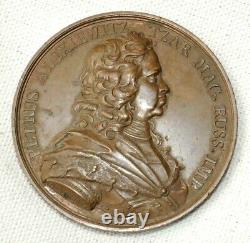
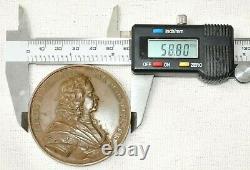
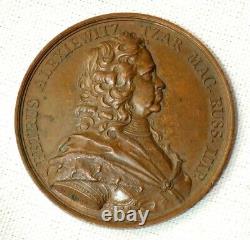
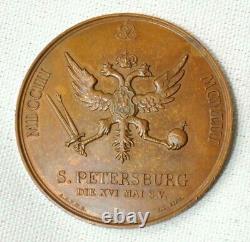
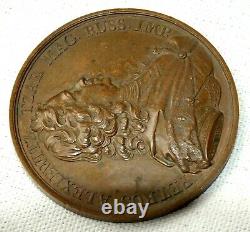
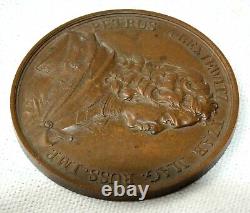
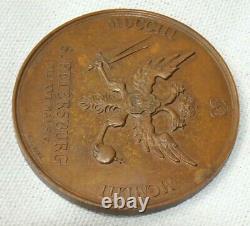
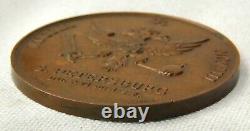
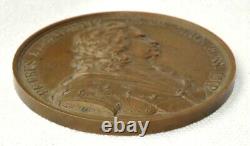
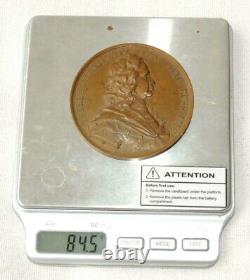
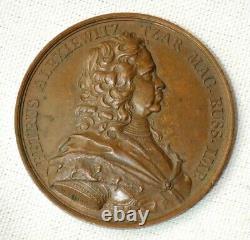
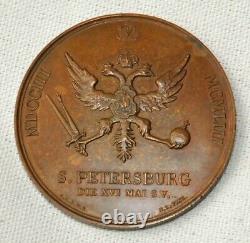

MEMORABLE ANTIQUE RUSSIAN BRONZE TABLE MEDAL. Of PETER I the GRAEAT. ABSOLUTELY RARE UNIQUE IMPERIAL MEDAL, MAGNIFICENT EKSPONAT, MUSEUM EXHIBIT!! Bronze Table Medal with the.
Made in Imperial of Russian. 5.28 mm in thickness.
0.21 dwt in thickness. The medal is in good condition. The raised details of the bas-relief portraits are exceptionally well preserved and crisp, show almost no wear. Beautiful even dark toning throughout.
There are only a couple of tiny dings to the edge, mostly on the reverse and not very noticeable or detractive. A truly superb example of this important award of the Medal of the 16th century. Russian Tsar Peter the Great ruled the Tsardom of Russia circa: 1725 - 1750 year. The ANTIQUE RUSSIAN BRONZE TABLE AWARD, PETER I, 1725 - 1750.With very minor dings, due to age. The item is described to the best of our knowledge. It is Original and in very good condition as you can see.
Medallic Art in Russia During the Reign of Peter the Great. Be they medals or coins, have traditionally served as carriers of important political and historical information. The proliferation of medals in seventeenth- and eighteenth-century Europe is truly remarkable. As easily portable attractive miniature sculptures, medals were not just collectibles-however aesthetically pleasing-but effective vehicles of propaganda. As part of his campaign of political and economic reforms to integrate Russia into the geopolitical fabric of early eighteenth-century Europe. Initially, Russian medals dedicated to seminal political events were commissioned from foreign workshops, usually German, by Peter's diplomatic envoys or the tsar himself.In the first quarter of the seventeenth century, the Moscow Mint started to employ a small number of outstanding European mint engravers (Solomon Gouin, Gottfried Haupt) as master die-sinkers. They were also assigned to provide instruction in die-stamp cutting to Russian apprentices. The die-stamps for this series were commissioned at the Augsburg workshop of the famous German medalist Philipp Heinrich Müller.
The collection also contains later copies of these medals, commonly referred to as novodely, produced at the St. The Great Northern War series is not complete; out of twenty-eight medals, the owns two original specimens in silver and five later copies in silver, bronze, and white metal. Another group of Russian medals of Peter the Great includes specimens, originating abroad, whose issuance was not prompted by requests from the Russian court. They are usually referred to as Russia in Russian numismatic literature and are dedicated to major victories of the Russian troops in the military conflicts with Turkey and Sweden, visits of Peter the Great to European courts, and his birth and death. Constitute a rather small separate category in the Russian cabinet, because the tradition of honoring an individual for personal accomplishments regardless of his social status was rare in Russia at that time.
During the latter half of the eighteenth century, Russian personal medals would be issued in profusion. Cabinet not only reflect major historic events of the reign of Peter the Great but also provide a good overview of contemporary Russian medallic production. Peter the Great aimed to overhaul the old Russian monetary system as part of his social reforms. Instead of making coins of copper wire, Peter wanted to issue coinage based on European standards.
Production of medals was part of a plan that included the establishment of a new mint. Petersburg Mint became functional shortly before Peter's death in 1725, but, even before that, the state had already assumed authority over medal issuance in Russia.Medals thus became instrumental in the propaganda efforts of Peter the Great in military and ideological battles with his opponents at home and abroad. Ruled the Tsardom of Russia and later the Russian Empire from 7 May O. 27 April 1682 until his death in 1725, jointly ruling before 1696 with his elder half-brother, Ivan V.
Through a number of successful wars, he expanded the Tsardom into a much larger empire that became a major European power. He led a cultural revolution that replaced some of the traditionalist and medieval social and political systems with ones that were modern, scientific, Westernized and based on the Enlightenment.
Peter's reforms made a lasting impact on Russia, and many institutions of Russian government trace their origins to his reign. Pictures are part of Description.
